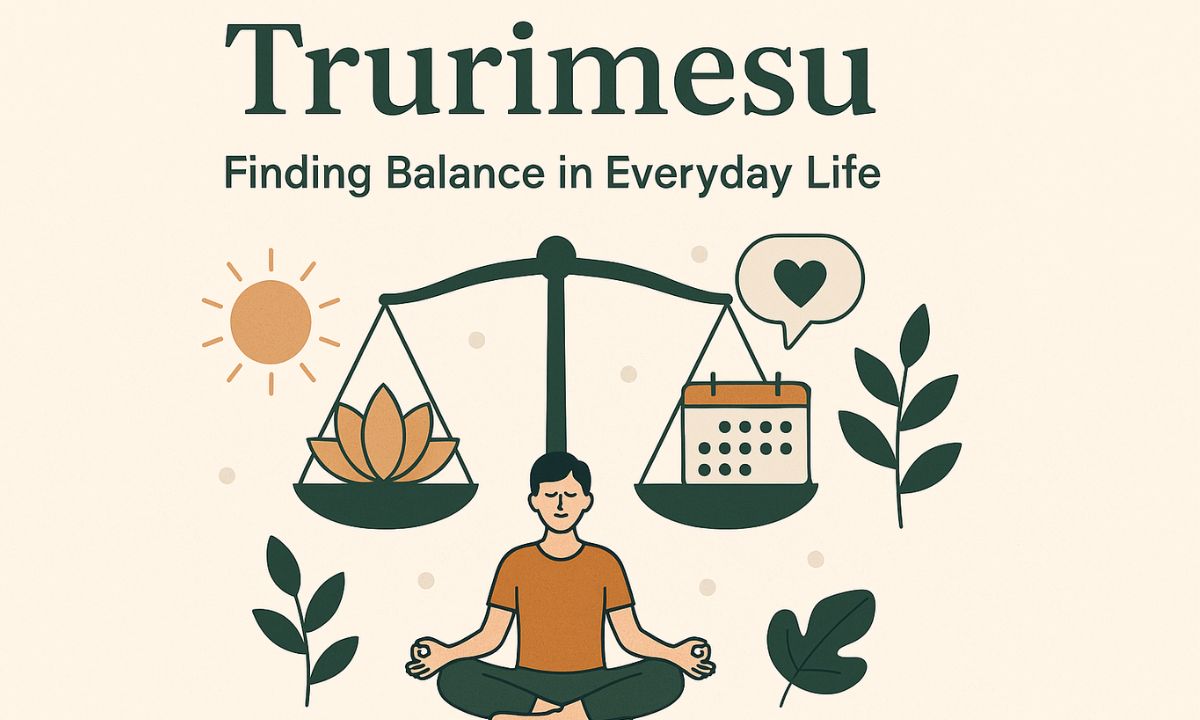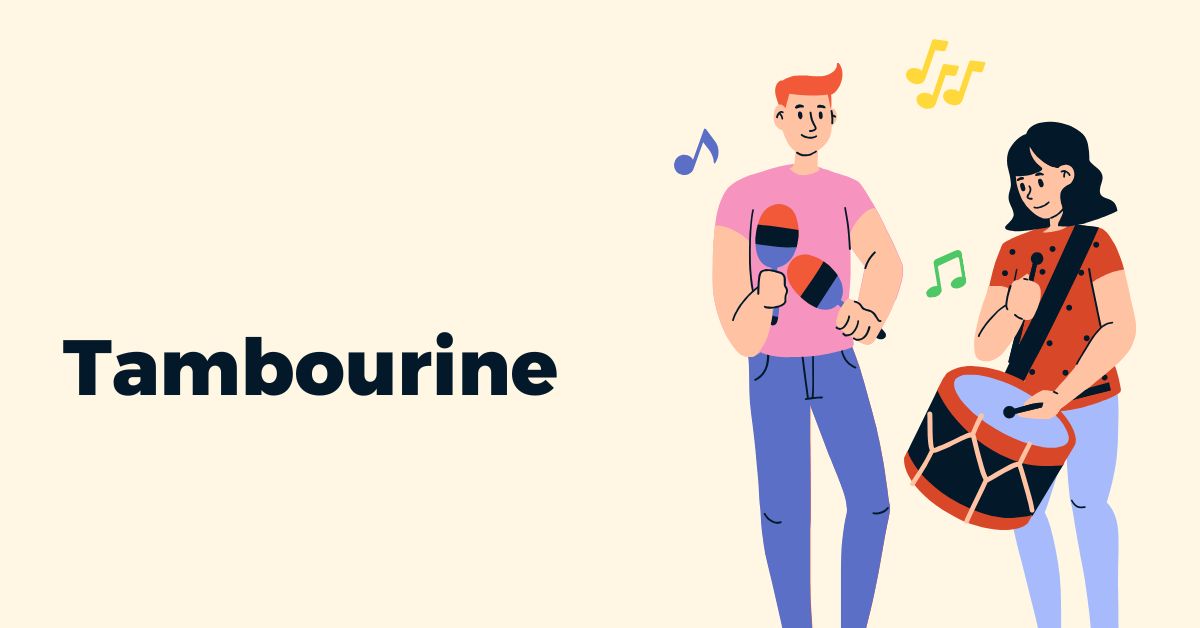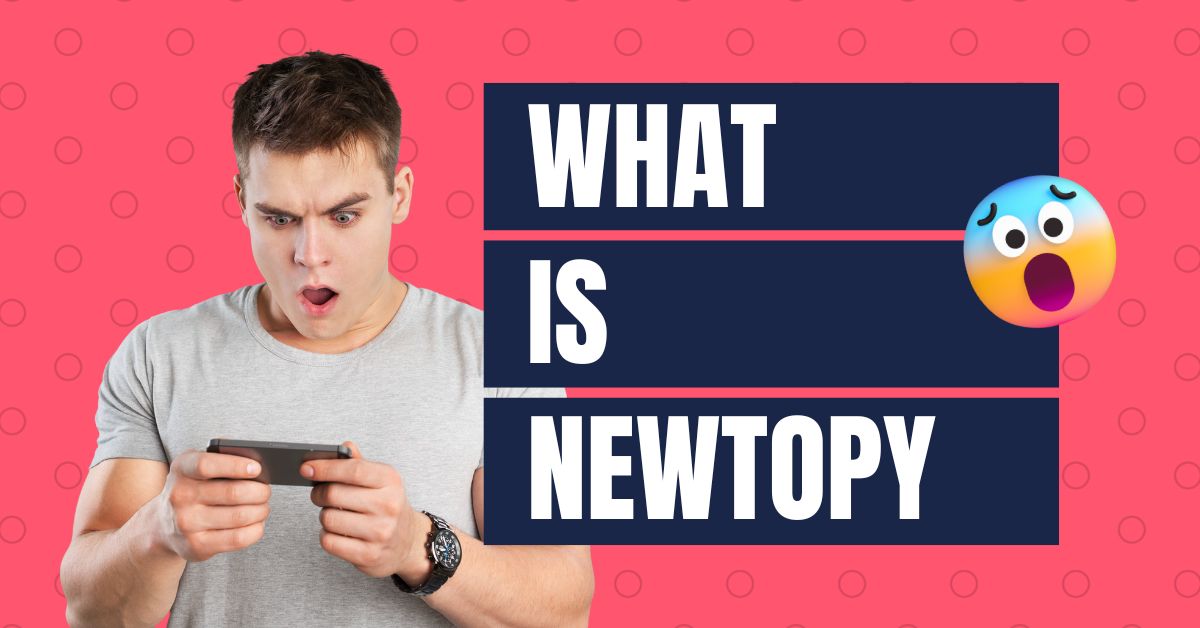GENERAL
Trurimesu: Finding Balance in Everyday Life

Life often feels like a never-ending list of things to do. Work pulls you one way, family another. Your phone keeps buzzing. The dishes are still in the sink. Some days, it’s hard to breathe, let alone find peace. That’s where Trurimesu comes in.
Trurimesu is a simple idea with a profound message: balance matters. It’s not about perfection or doing it all. It’s about staying steady in small ways every day. Let’s explore what Trurimesu means and how it can help you live more calmly, even when life gets busy.
What Is Trurimesu?
Trurimesu means “true rhythm” or “natural flow.” It’s about living in a way that feels steady and real. It’s not about significant changes or complex rules. And it’s about finding small ways to stay balanced in your daily life.
You don’t have to be a monk, a wellness expert, or live on a mountain. You need to notice what throws you off and what brings you back. Trurimesu isn’t a quick fix. It’s a way to think, act, and care for yourself in little moments.
The Core Ideas of Trurimesu
Let’s break it down into five simple ideas. These make up the heart of Trurimesu.
1. Simplicity
Life gets heavy when there’s too much stuff, noise, and pressure. Simplicity means keeping things light, both in your space and mind. This can mean saying no more often or choosing one task instead of ten. Simple doesn’t mean lazy; it means clear.
2. Presence
You can only live in one moment at a time. Presence means giving that moment your full attention. That means listening when someone talks—not scrolling while eating and not rushing to the next thing while doing this one. Being present helps you feel calm and clear. It also enables you to enjoy what you’re doing, even if it’s small.
3. Gratitude
Gratitude isn’t just saying thanks. It’s noticing what’s good, even on hard days. It could be warm coffee, a quiet walk, or a kind word. These things matter more than we think. Gratitude helps you see what’s already working instead of constantly chasing more.
4. Rhythm
Everything in nature has a rhythm. Waves rise and fall, seasons change, and people need rhythms, too. Trurimesu means knowing your best times to work, rest, and connect. You don’t have to follow someone else’s pace. When you listen to your rhythm, life feels smoother. You stop forcing things and start flowing with them.
5. Awareness
You can’t balance what you don’t see. Awareness means checking in with yourself—how you feel, what you need, and what’s off. This helps you catch stress before it builds. It enables you to fix problems before they get big.
Trurimesu in Everyday Life
These ideas sound nice, but do they work when life gets messy? Let’s look at some everyday situations.
At Work
You’re jumping from meeting to meeting. Emails pile up. Lunch gets skipped again. Trurimesu here means choosing a few straightforward tasks each day. Block quiet time if you can. Step outside for five minutes. That five-minute break can help you reset your whole afternoon.
With Family
The kids are loud. The house is messy. Everyone needs something at the same time. Try giving full attention to one person at a time. Even five focused minutes can make a difference. Ask for help when you need it. Balance isn’t doing it all—it’s sharing the load.
With Technology
Your phone pulls you in with alerts, news, and endless scrolls. Set times to check your phone, not every time it buzzes. Turn off non-urgent alerts. Create screen-free moments, like during meals or before bed. Your brain needs space to rest.
When You’re Alone
You finally get time to yourself, but your mind won’t stop racing. Start small. Sit with a warm drink. Write down one thing that felt good today. You don’t need to fix everything. Just noticing how you feel is a form of balance.
Small Habits That Help
You don’t need a whole routine. One or two small habits can shift your day. Here are a few ideas.
- Drink a glass of water before coffee.
- Stretch for one minute after waking up.
- Take three deep breaths before answering your phone.
- Write down one thing you’re thankful for each night.
- Step outside for a short walk, even if it’s just around the block.
- Put your phone away during meals.
- Set a regular bedtime, even if you don’t immediately fall asleep.
These habits are easy to skip—but powerful when done often.
When Balance Feels Hard
You won’t always feel balanced, and that’s okay. Some days will be messy, loud, and full of stress. Don’t aim for perfect balance. Aim for awareness. When you notice you’re off, you can take one small step to return. Maybe that step is a pause, a walk, a talk with someone you trust, or just saying, “Today is hard, and that’s okay.” Forgive yourself when your balance slips. It’s not failure, it’s life.
Living the Trurimesu Way
Trurimesu isn’t a rulebook. It’s a reminder. It reminds you to stay close to what matters. To breathe before reacting. To listen to your own pace. You don’t have to change your whole life to live with balance. You need to keep noticing and adjusting. The more you live this way, the more it feels natural. You still have busy days, but they don’t knock you down as quickly. You find peace in small ways, even when things are complete.
ALSO READ: How artofzio Redefines Digital Art
Try It Today
Start with one thing. Choose one habit or idea from this post and try it today. See how it feels. You don’t need to get it perfect. Then try again tomorrow. Trurimesu is not about speed. It’s about rhythm. Your rhythm. Let it guide you.
GENERAL
Tambourine: The Joyful Jingle of Rhythm and Culture

The tambourine is more than just a musical instrument; it’s a cultural symbol, a rhythmic companion, and an artistic expression used across the globe. With its unmistakable jingle and versatile play style, the tambourine has transcended centuries, adapting to genres from classical orchestras to street performances. Whether it’s in the hands of a folk dancer or a rock musician, its charm never fades.
Historical Origins of the Tambourine
The tambourine dates back to ancient Mesopotamia, Egypt, and Greece, where it was often associated with spiritual and religious ceremonies. Originally crafted from wooden frames with animal skin heads and metal jingles, early tambourines were played during rituals, dances, and communal celebrations. Over time, the instrument made its way into Europe and Asia, influencing diverse musical traditions.
Cultural Significance in Different Regions
From Indian devotional music to Middle Eastern belly dancing and Mediterranean folk songs, the tambourine carries profound cultural weight. In Italy, the “tamburello” plays a vital role in tarantella dances. In Brazil, it’s known as the “pandeiro,” central to samba music. Each culture adds its own flair, making the tambourine a truly global instrument.
Types of Tambourines
There are several variations of tambourines, each serving a unique purpose. The most common type is the handheld tambourine with jingles and a drumhead. Headless tambourines, lacking the skin, are great for sharp, percussive sounds. Mounted tambourines are used in drum kits for added rhythm, while some versions include electronic pickups for modern setups.
Construction and Design Features
A tambourine typically consists of a circular wooden or plastic frame, fitted with pairs of small metal discs called zills. Some models feature a stretched membrane, similar to a drum, which adds an extra percussive layer. The materials and craftsmanship determine the quality, tone, and durability of the instrument, with professional tambourines made for precision and sound clarity.
How to Play the Tambourine
Playing the tambourine might look simple, but mastering it requires skill. Basic techniques include shaking, tapping, striking, and rolling. Players can produce rhythmic patterns by alternating between their palm, fingers, and even their thigh. In advanced techniques, players may use thumb rolls or integrate the tambourine into footwork while dancing.
Role in Orchestras and Classical Music
Although often linked with folk traditions, the tambourine is a recognized orchestral instrument. Composers like Tchaikovsky and Berlioz incorporated it into symphonic scores to add texture and rhythmic sparkle. In orchestras, percussionists use specific techniques to blend the tambourine’s sound with the overall harmony and dynamics of a piece.
Tambourine in Modern Music Genres
In pop, rock, country, and gospel, the tambourine continues to hold a firm place. Iconic bands like The Beatles, The Rolling Stones, and Fleetwood Mac used tambourines to add zest to their recordings. Its crisp, energetic sound enhances choruses, making them feel livelier and more engaging.
Tambourine in Religious and Spiritual Practices
Across many faiths, the tambourine has spiritual significance. In Christian churches, tambourines are played during worship and praise services. In Jewish celebrations, they appear in joyous dances and festivals. The rhythmic beat of a tambourine often symbolizes joy, liberation, and divine connection.
Famous Tambourine Players and Performers
Several artists have brought the tambourine to the spotlight. Stevie Nicks of Fleetwood Mac is famously known for her ethereal performances with a tambourine in hand. Percussionists like Sheila E. and Zakir Hussain have also incorporated tambourines into their dynamic sets, showing the instrument’s versatility and star power.
Learning to Play: Tips for Beginners
For those starting out, it’s best to begin with a basic tambourine and learn simple rhythms. Focus on control, grip, and timing. Practice with a metronome and try to mimic rhythms from your favorite songs. Over time, you’ll develop muscle memory and discover your unique playing style.
Maintenance and Care of a Tambourine
Proper maintenance ensures a longer life for your instrument. Keep the tambourine in a dry place to avoid moisture damage. Clean the frame and jingles regularly to prevent rust and dust build-up. If your tambourine has a drumhead, avoid exposing it to extreme temperatures or tension.
Buying Guide: Choosing the Right Tambourine
When buying a tambourine, consider the genre you’ll be playing, the size, number of jingles, and whether you want a head or headless version. Beginner models are inexpensive and good for casual playing. Professional versions offer better sound quality and are ideal for performances or recordings.
DIY Tambourines and Craft Projects
Making a tambourine at home can be a fun DIY project, especially for kids or classroom activities. Using paper plates, bottle caps, bells, and staples, you can create a simple version that introduces rhythm and music appreciation. It’s a great way to combine creativity and education.
Tambourine in Dance and Performance Art
In many cultural dance forms, the tambourine is not just played—it’s performed. Dancers incorporate it into their choreography, using it to accentuate footwork and hand gestures. This creates a visual and auditory performance that engages audiences on multiple levels.
Tambourine’s Impact on Music Education
Music educators use tambourines to teach rhythm, coordination, and musical expression to students of all ages. Its ease of use makes it a perfect gateway instrument. It helps young learners grasp beats, patterns, and timing, serving as a foundation for more advanced percussion instruments.
The Symbolic Meaning of Tambourines
Beyond music, tambourines symbolize celebration, freedom, and unity. From victory dances in ancient texts to modern street parades, the tambourine echoes the human spirit’s desire to connect through rhythm. It often represents a bridge between the physical and the spiritual, the earthly and the divine.
The Tambourine in Film and Pop Culture
Tambourines have made memorable appearances in movies, music videos, and TV shows. Whether used in folk scenes, 60s flashbacks, or gospel choirs, the tambourine stands out visually and sonically. It’s often associated with peace, love, and good vibes, adding authenticity and charm to scenes.
Future of the Tambourine in Music
As music technology evolves, tambourines are also adapting. Electronic tambourines with sensors and MIDI compatibility are entering the market, allowing integration with digital music systems. Despite modernization, the organic sound of a classic tambourine remains irreplaceable.
Conclusion
The tambourine is a timeless piece of musical culture—simple yet profound. It’s accessible to beginners yet beloved by professionals. It dances through history, tradition, and genre with a unique sound that’s both joyful and expressive. No matter where you hear its jingle—on stage, at a festival, or in your own hands—it reminds us of the universal language of rhythm.
Frequently Asked Questions
What is the main purpose of a tambourine in music?
The tambourine adds rhythm, texture, and brightness to music, enhancing its energy and groove across various genres.
Can a tambourine be used in professional music?
Yes, tambourines are used in orchestras, bands, studios, and live performances by professional musicians worldwide.
How is a tambourine different from a drum?
A tambourine includes jingles and is usually handheld, while a drum is struck with sticks and doesn’t produce jingling sounds.
Is it hard to learn to play the tambourine?
It’s easy to start but takes practice to master techniques like rolls and syncopated rhythms.
Are there electronic tambourines?
Yes, modern electronic tambourines can be connected to sound systems or used with MIDI setups for expanded musical control.
GENERAL
Classroom 20x: Transforming Learning in the Modern Age

Classroom 20x is more than a buzzword—it represents a revolutionary shift in how education is delivered, experienced, and understood. Unlike traditional classrooms with chalkboards and textbooks, Classroom 20x blends technology, innovation, and engagement to create a futuristic learning space that empowers students and teachers alike.
The Evolution from Traditional to 20x Classrooms
Education has always evolved, from oral storytelling to printed textbooks, and now to digital learning platforms. Classroom 20x stands at the intersection of these transitions, combining physical classrooms with digital innovation, turning passive listeners into active participants.
Core Principles of Classroom 20’x
At the heart of Classroom 20x lies a learner-centric philosophy. It values creativity, collaboration, critical thinking, and personalized learning. It’s not about replacing teachers with technology, but equipping them with better tools to inspire students.
Technology as the Backbone of Learning
Classroom 20x leverages smartboards, AI-powered apps, virtual reality, and cloud-based tools to create immersive and interactive lessons. Students use tablets instead of paper, and lessons are no longer confined to the four walls of a room.
Personalized Learning Experiences
One of the biggest strengths of Classroom 20’x is its ability to tailor lessons to individual student needs. Adaptive learning platforms monitor student progress and adjust lesson difficulty in real-time, ensuring every learner remains engaged and challenged.
Gamification of Education
Gamification brings fun and motivation into the learning process. Through point systems, leaderboards, and rewards, students become more invested in their academic performance. Classroom 20’x uses this to foster healthy competition and enhance retention.
Collaborative Learning Environments
Classroom 20x promotes peer-to-peer learning. Digital collaboration tools like Google Workspace, Microsoft Teams, and Miro allow students to work on group projects, brainstorm ideas, and provide feedback in real time—even across different schools or countries.
Blended Learning Approaches
Blended learning in Classroom 20’x combines online and offline methods. Students might watch a lesson video at home and then apply their knowledge in a hands-on classroom activity. This “flipped classroom” model encourages deeper understanding.
Real-Time Feedback and Assessment
Instead of waiting days for graded papers, students receive instant feedback through learning management systems (LMS). Teachers can track progress, identify gaps, and offer targeted interventions, making education more responsive and efficient.
Virtual Reality and Augmented Reality Integration
Classroom 20x is transforming field trips into virtual adventures. With VR and AR, students can explore ancient Rome, dissect a frog, or walk through the solar system—all without leaving their classroom. These experiences make abstract concepts tangible.
Artificial Intelligence and Learning Analytics
AI in Classroom 20x analyzes data to enhance learning outcomes. It identifies patterns, predicts performance, and helps teachers make informed decisions. AI also powers chatbots that answer students’ questions 24/7, offering extra support.
Teacher Roles in the 20x Model
Teachers in Classroom 20’x become facilitators rather than lecturers. They guide discussions, encourage exploration, and mentor students. Technology handles repetitive tasks, giving teachers more time for personal interactions and creative instruction.
Student Empowerment Through Autonomy
Classroom 20x shifts control into students’ hands. Learners choose topics, set goals, and manage their pace. This fosters responsibility, self-motivation, and confidence—skills crucial in the real world.
Inclusive and Accessible Learning
With Classroom 20x, education becomes more inclusive. Assistive technologies like speech-to-text, screen readers, and adjustable interfaces ensure that students with disabilities can participate fully. Language translation tools also break down linguistic barriers.
Environmental and Economic Benefits
Digital classrooms reduce the need for paper, lowering environmental impact. They also cut down transportation costs and enable remote learning, saving both schools and families money. In the long run, Classroom 20x is both eco-friendly and economical.
Challenges in Implementing Classroom 20’x
Despite its benefits, transitioning to Classroom 20x comes with hurdles. Not all schools have access to high-end technology. There are also concerns about screen time, data privacy, and training teachers to adapt to digital platforms.
Solutions to Overcome Implementation Barriers
To address these challenges, governments and private sectors must invest in digital infrastructure and teacher training. Schools can start small—introducing one tool at a time—and gradually build up to the full Classroom 20x model.
Parental Involvement in the Digital Classroom
Parents play a key role in Classroom 20’x. With apps that track student progress, parents can stay informed and engaged. This collaboration between school and home boosts student performance and emotional well-being.
Case Studies of Successful 20x Classrooms
Schools in Finland, Singapore, and parts of the U.S. have already adopted Classroom 20x principles with excellent results. These schools report higher student engagement, improved academic scores, and better teacher satisfaction.
Future Trends in Classroom 20x
Looking ahead, Classroom 20’x will likely incorporate AI tutors, blockchain-based credentialing, and global collaborative projects. As technology advances, so will the possibilities for creating even more dynamic, equitable, and inspiring learning environments.
Conclusion
Classroom 20x isn’t just about screens and gadgets—it’s about reimagining the way we teach and learn. It empowers both students and teachers, breaking down barriers and opening up new opportunities. As we embrace this educational revolution, we’re not only preparing students for exams but equipping them with the skills to thrive in a complex, digital world.
FAQs
What is the concept behind Classroom 20x?
Classroom 20x is an innovative educational model that integrates technology, personalized learning, and collaborative tools to create a future-ready learning environment.
How is Classroom 20x different from traditional classrooms?
Unlike traditional classrooms, Classroom 20x uses interactive technology, adaptive learning, and student-centered approaches to enhance engagement and effectiveness.
Can schools with limited budgets adopt Classroom?
Yes, schools can start with low-cost tools like Google Classroom and gradually scale up. Many resources are free or subsidized by educational grants.
Are there any risks involved in Classroom?
While there are concerns like screen fatigue and data privacy, proper policies, teacher training, and balance can effectively manage these issues.
What role do teachers play in a 20x classroom?
Teachers act as facilitators, using technology to enhance instruction, provide guidance, and support students in navigating personalized learning paths.
GENERAL
Understanding Newtopy: A Modern Digital Trend Guide

Newtopy is a buzzword increasingly gaining traction in digital circles, referring to emerging topics, trends, or content styles that rapidly gain popularity across online platforms. These “new-topics” combine freshness with viral potential, helping creators, marketers, and tech-savvy users stay ahead of the curve.
Why Newtopy Matters Today
In a fast-paced digital world, staying relevant is everything. Newtopy ensures you don’t just keep up—you lead. By understanding trending topics before they hit the mainstream, businesses and individuals can tailor their content and messaging to match current interests.
Origin of the Term Newtopy
The term “Newtopy” merges “new” and “topic,” symbolizing the ever-evolving wave of online conversations. It originated from SEO and digital marketing communities looking to pinpoint trending ideas before they saturate the market.
How Newtopy Impacts Content Creation
Creators who understand Newtopy can craft highly engaging, time-sensitive content that aligns with what audiences are already curious about. This leads to more clicks, shares, and engagement, especially on social media platforms like TikTok, YouTube, and Twitter.
The Role of Newtopy in SEO
Search engines prioritize fresh, relevant content. Newtopy boosts SEO performance by targeting trending keywords and topics, helping web pages rank faster and higher. It’s a shortcut to climbing search rankings and attracting organic traffic.
Identifying Newtopy in Real-Time
Identifying Newtopy requires tools like Google Trends, Twitter’s trending topics, or Reddit’s popular threads. AI-driven platforms also analyze search patterns and user behavior to flag emerging topics before they hit mass awareness.
Using Newtopy for Niche Marketing
In niche markets, Newtopy helps brands quickly adapt their strategies. Whether it’s eco-friendly products or digital finance, tapping into new subtopics allows marketers to serve ultra-specific content to highly engaged audiences.
Social Media’s Influence on Newtopy
Platforms like Instagram and TikTok are breeding grounds for Newtopy. Viral videos, memes, or influencer shoutouts can make a topic explode in popularity within hours. Tracking these trends is essential for brand visibility.
How Bloggers Can Use Newtopy
Bloggers benefit by creating timely posts on trending subjects. A lifestyle blogger, for instance, can write about a new wellness trend spotted on Pinterest, capturing traffic before mainstream sites catch on.
Benefits of Embracing Newtopy
Leveraging Newtopy offers multiple benefits: faster audience growth, improved engagement, better SEO results, and thought leadership. It positions you as someone who’s not just current, but cutting-edge.
Risks of Relying Too Much on Newtopy
While chasing trends has perks, overdoing it can dilute your brand identity. Staying authentic while incorporating Newtopy is the key to maintaining trust and long-term relevance.
Newtopy vs Evergreen Content
Newtopy is time-sensitive and explosive, while evergreen content is steady and long-lasting. The smartest content strategy blends both: ride the wave of Newtopy while maintaining a foundation of timeless material.
Tools to Track New’topy Effectively
Several tools help you track Newtopy, including BuzzSumo, Exploding Topics, SEMrush, and even AI tools like ChatGPT. They scan the web to identify patterns and highlight what’s gaining traction now.
Examples of New’topy in Action
During the pandemic, terms like “remote work tools” or “Zoom fatigue” emerged as Newtopy. In 2024, topics like “AI avatars” and “virtual fashion shows” began trending across platforms—clear indicators of digital evolution.
Strategies to Implement New’topy in Business
Businesses can integrate New’topy by assigning trend-spotters, setting up alerts for rising keywords, and responding quickly with relevant content, products, or services. Speed and agility are crucial.
Creating Viral Content with Newtopy
To make content go viral, tie your message to a New’topy topic and add a unique spin. Timing, originality, and emotional appeal drive engagement and increase the chances of shareability.
How Newtopy Enhances Brand Authority
Consistently aligning with new topics signals innovation. Audiences trust brands that are “in the know,” making Newtopy an effective tool for strengthening authority and credibility in any industry.
Monetizing New’topy for Profit
Affiliate marketers, eCommerce sellers, and influencers can all profit from Newtopy by offering trending products, writing sponsored content, or creating tutorials that ride the trend wave.
Challenges in Keeping Up with New’topy
Trends fade quickly. What’s hot today may be irrelevant tomorrow. Staying up-to-date requires constant vigilance, quick content production, and a deep understanding of audience interests.
The Future of Newtopy
As AI and data analytics become more advanced, New’topy will evolve into a predictive engine. Future platforms may suggest content ideas before the trends even surface publicly, changing how content is created and consumed.
Conclusion
Newtopy isn’t just a trend—it’s a strategy. In a digital landscape ruled by speed and attention, knowing what’s next can set you apart from the competition. Whether you’re a content creator, marketer, entrepreneur, or just a curious explorer of the internet, integrating Newtopy into your strategy is the best way to stay ahead of the digital curve.
FAQs
What’s the difference between New’topy and trends?
Newtopy refers to new and emerging topics gaining traction, while trends are broader and may already be widely recognized.
Can small businesses benefit from New’topy?
Absolutely! Small businesses can adapt quicker than large corporations and capitalize on Newtopy to gain rapid exposure and relevance.
Is Newtopy only for digital marketers?
No. Bloggers, influencers, educators, journalists, and even hobbyists can use New’topy to enhance content and communication strategies.
How do I know if a topic qualifies as New’topy?
If a topic is gaining sudden online attention and hasn’t been fully saturated in search results or social media, it likely qualifies.
Does New’topy apply to offline businesses?
Yes. Even brick-and-mortar businesses can use Newtopy to adjust advertising campaigns, product offerings, and social engagement strategies.
-

 TECHNOLOGY8 months ago
TECHNOLOGY8 months agoShortEngine .com#: Features, Benefits, and Pricing Explained
-

 ENTERTAINMENT6 months ago
ENTERTAINMENT6 months agoNLPadel: Revolutionizing Padel in the Digital Era
-

 ARTIFICIAL INTELLIGENCE9 months ago
ARTIFICIAL INTELLIGENCE9 months agoWhy XAI900T Is Changing the Way We Understand AI
-

 BUSINESS8 months ago
BUSINESS8 months ago5starsstocks .com: Unlocking the Best Stock Investment Strategies
-

 APPS8 months ago
APPS8 months agoWhat is AppForDown? A Complete Guide to Its Features and Benefits
-

 BUSINESS8 months ago
BUSINESS8 months agoWhy FintechZoom.io is Your Ultimate Source for Fintech Insights
-

 TECHNOLOGY9 months ago
TECHNOLOGY9 months agoBreaking News and Updates Only on Scoopupdates .com
-

 TECHNOLOGY8 months ago
TECHNOLOGY8 months agohttp://www.arlindmorina.info – Where Creativity Meets Tech
